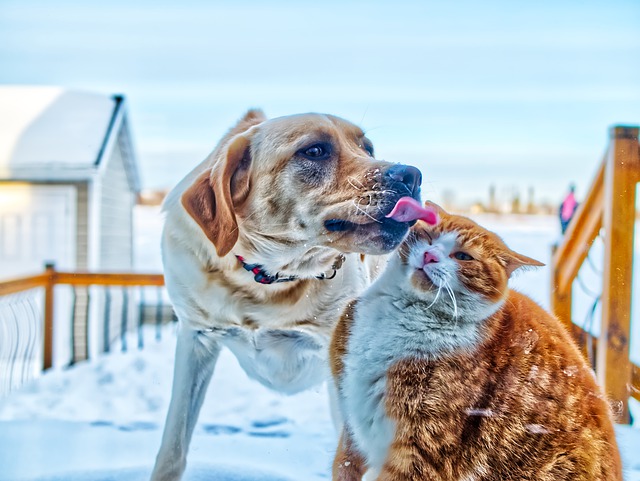
However, it is necessary to be vigilant about the composition of the given treats and also the quantity! Here are a few simple rules to adopt for the proper use of treats.
Objectives of the treats
The treats are given for several reasons.
- First of all, treats help create an emotional bond with your pet, especially when it has just arrived at your home. Thus, the treats increase your dog or cat’s enjoyment when he is with you. You can thus get your dog or cat used to being petted and manipulated.
- The treat is also used by the owner to please their pet and to vary their diet. Be careful however not to become too anthropomorphic: animals are much less sensitive than we are to the variety of food, they like the routine of their kibble.
- Treats are also very widely used in the education of animals, especially dogs. This is part of dog education through positive reinforcement. The idea is to encourage the animal to do what is asked of it and then reward it. Treats are a help in this process, making the dog more inclined to perform the exercises. Treats are also given after simple commands. Be careful, however: treats should never be given without a reason, otherwise the dog will not understand anything. You should also know that positive reinforcement is also achieved through games, vocal praise, walks, etc.
- The treats can also be used in a medical context, with a cat or dog that doesn’t eat much anymore. The treats are very palatable and can help the animal regain its appetite.
- Also, some treats can be used as a dietary supplement in case of a deficiency in your pet. Be careful, the deficiency will have to be perfectly diagnosed by your veterinarian!
- Still in the medical field, the treats also make it easier to take medication, especially in a cat.
- Finally, some treats also have a role in oral hygiene, preventing the formation of plaque and tartar on the animal’s teeth, thanks to a mechanical abrasive action.
Limits to be set on treats
First of all, it is imperative to remember that sweets must remain exceptional! It is also up to you to decide when you want to give a treat. Even in the context of education, don’t give them all the time, and give them sparingly: a small treat after exercise, not the whole package! The dog should not insist on a reward or establish a power relationship. If you have decided not to give him a treat, stay firm in your position and keep your dog away. As your dog’s education progresses, the treats should be spaced out. Also be careful that your dog does not take your food as a treat (piece of bread lying around, snacks from your child…). Be very firm on this point.
Of course, treats are no substitute for meals, even if your dog or cat loves them!
What treats to give / not to give?
First of all, the golden rule is to never give table scraps or human food as treats. This would not only harm your pet’s education but also its health. Indeed, our food is often too salty and too sweet for pets, and therefore far too caloric. By way of comparison, one sugar cube for a 10 kilogram poodle corresponds to 7 sugar lumps for an adult human. Similarly, one dry cookie like a little butter for your dog corresponds to the energy equivalent of two hamburgers at home. Peanuts are also to be avoided because they are very salty. Don’t forget also that chocolate is a toxic substance for dogs and cats and that it is therefore strictly forbidden to give it to them. Do not give bones to your dog or fish to your cat either: they might stick bits of bones / bones in the digestive tract and force you to make an emergency visit to the vet! It is also important to avoid giving table scraps to limit the risk of food intolerance. Not giving table scraps also helps prevent your dog from coming to claim when you prepare food or when you eat.
If you own a dog, you should give him dog treats. The same goes for a cat. The size of the treat should be adapted to the size of the animal: for example, a dog could choke on treats that are too small.
Low-fat and low-sugar sweets are to be preferred. Some brands now offer treats with a different composition or structure depending on the purpose: “pleasure” treats, “education” treats, “health” treats. There are also calcium-enriched treats for young dogs, biotin-enriched treats for dogs doing intense physical exercise… Biscuits, chewy bones, snacks, bites… the choice is great. Chewy bones or pig’s ears are the most suitable treats for a mechanical action on your dog’s teeth. They also have the advantage of keeping the dog occupied longer.
You can also make your pet’s treats yourself. Be careful only with forbidden food! Favour meat, starchy foods and vegetables.
THE golden rule
Never forget that treats, even the best ones, are an extra calorie intake compared to your pet’s daily ration. It is therefore imperative to recalculate the amount of kibble or food given to your pet by taking into account the nutritional intake of the treats. Otherwise, the risk of obesity for your pet is great, and you will deprive it of several years of life.
Don’t forget that the “classic” dog or cat food (kibbles, pâtée, household food) is normally perfectly adapted to your pet and does not require any supplement, and therefore no treats. Don’t hesitate to consult your veterinarian to establish with him a course of action regarding these treats.






